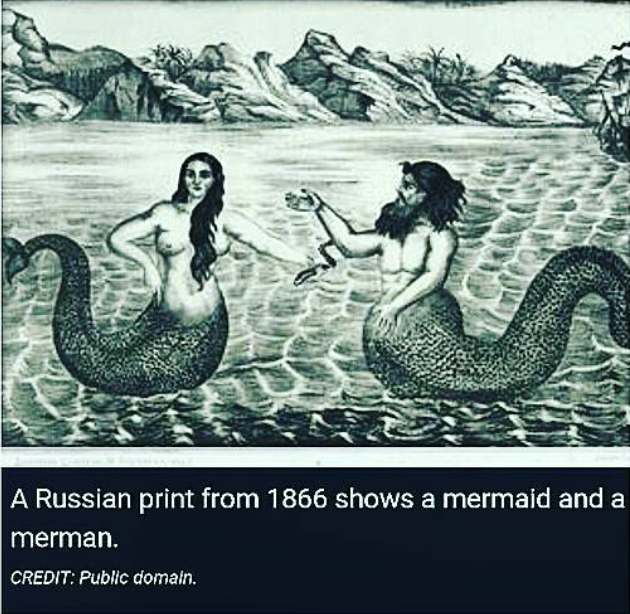
In last week’s Monday Morning Mermaid Lesson Blog, Ukraine Mermaid Folklore, we touched base on the Rusalkas, which is also shared in Russian mermaid lore. However, because they have legs, they are not the traditional mermaids, but more ladies of the lake. Lost Souls of the sea…drowned women or lost souls of the unbaptized children. It is said that witches alone can bathe with them unhurt.
In Russia, the Rusalkas are described as haunting lakes and streams, living at the bottom in crystal halls adorn with gold, silver, and precious stones.
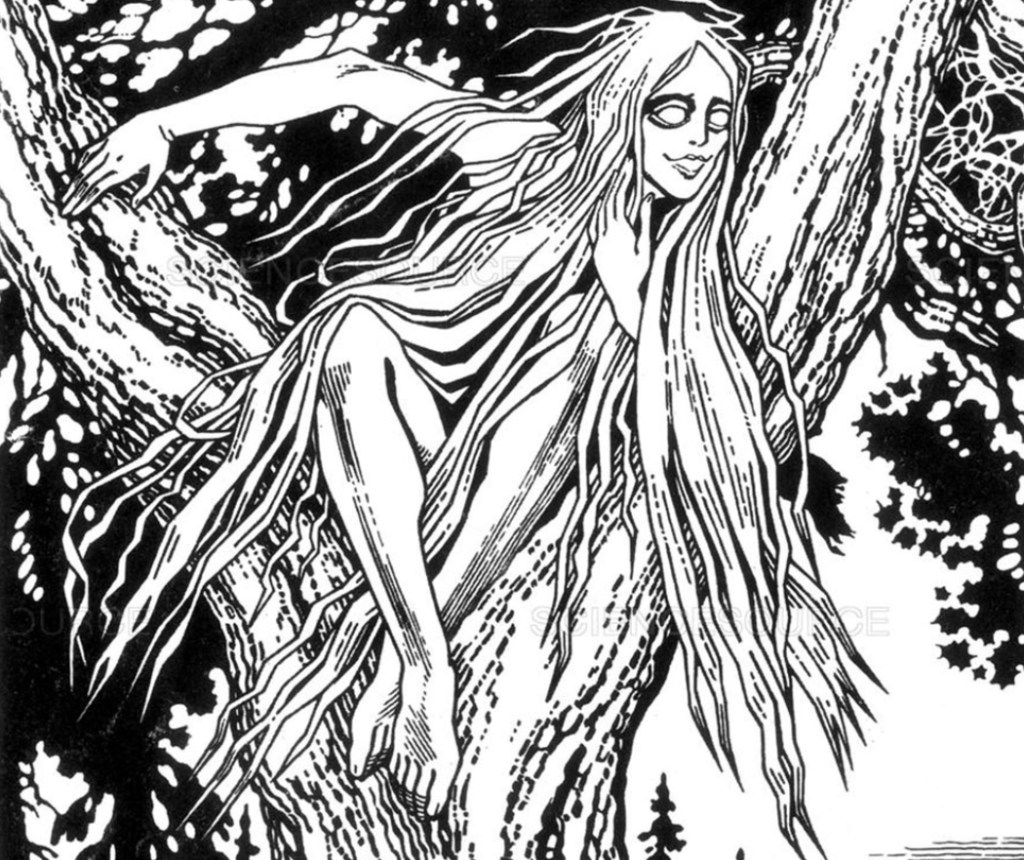
Besides the full-grown Rusalkas, there are little ones, having to appear around the age of seven. Folklore by the Russian peasants is to be the ghosts of still-born children, or those that died before there was time to baptize them.
(Mentioned briefly in last week’s Monday Morning Mermaid Lesson blog on Ukraine.)
These children are taken by the Rusalkas stealing them after death from their homes or even their graves and the Rusalkas take them back to their water dwellings.
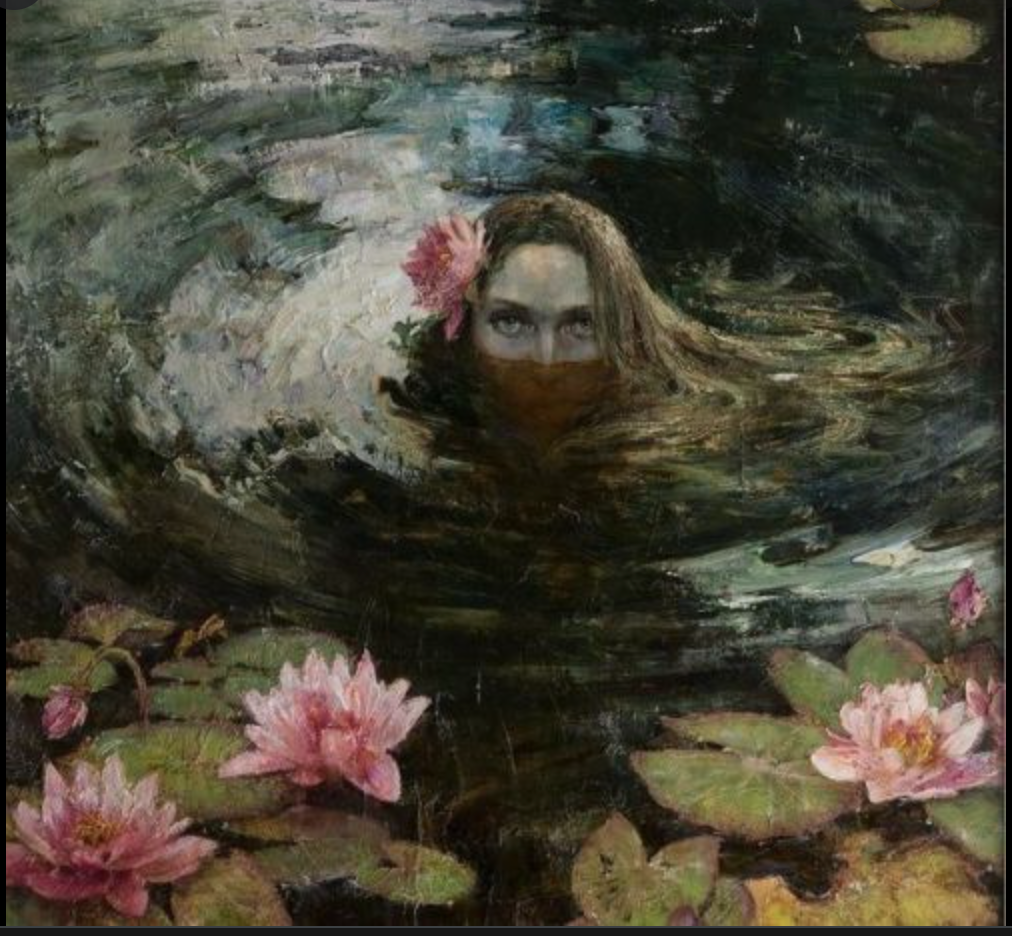
Every Whitsuntide, (a festival that has a ceremony of expelling the Rusalkas) these children respectively for seven years, their souls fly about, asking to be christened. If anyone hears one of them, they must shout, “I baptize thee in the name of the Father, and of the Son, and of the Holy Ghost,” and the child’s soul will be saved and straight to heaven.
I still wonder if this was the church jumping in on a folklore for it’s own scare tactic to get more followers in their pews.
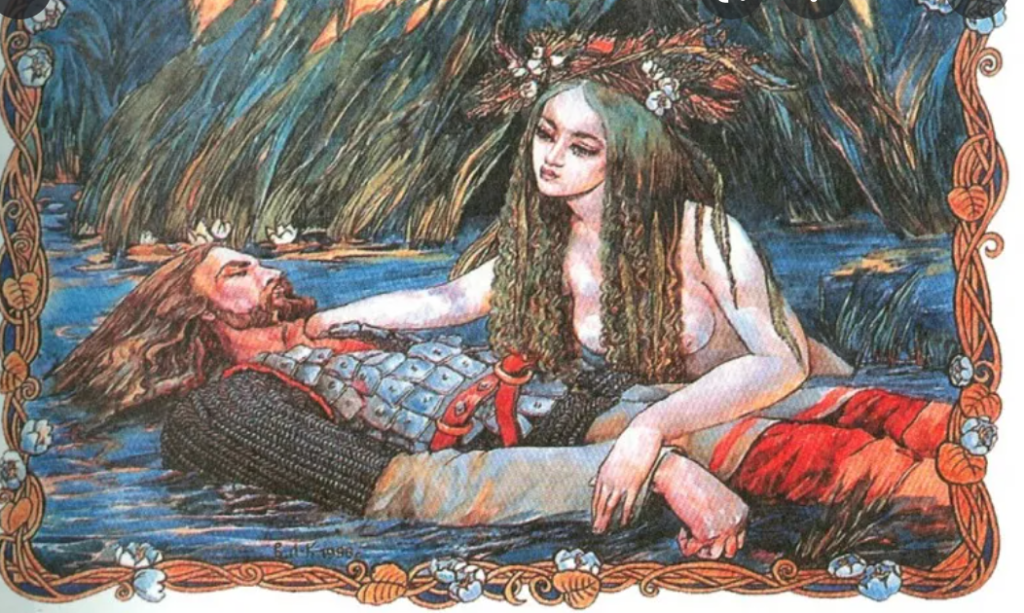
A religious service, performed annually on the first Monday of the “Peter’s Fast”, on behalf of these “lost” children was also reportedly guaranteed their safety. On that first Monday and going into more depth about the Whitsuntide (associated with Peter’s Fast) the expelling of the Rusalkas is when a figure is made of straw and draped in women’s clothing to represent the Rusalka. They form two groups and sing while dancing into the middle of a field. She who is holding the straw Rusalka goes in the middle while one of the groups starts to attack the Rusalka and the other group defends it. They return home stating with pride they expelled the Rusalka.
(Not that I am planning to go visit Russia anytime soon, but this festival sounds very violent and angry.)
In St. Petersburg, Russia (yes the connection to Peter’s Fast) there is the fountains at Peterof, built on a grand scale and some would say impressive in all its gold glory.
The center piece, The Samson Fountain, portrays Samson in the process of tearing a lions jaw in half. This is to showcase the victory Russia had over Sweden. (Clearly, the Russian government likes to dominate and brag.)
So, why mention this statue?
Well, it is in the middle of 39 other gilded sculptures including a number of mermaids.
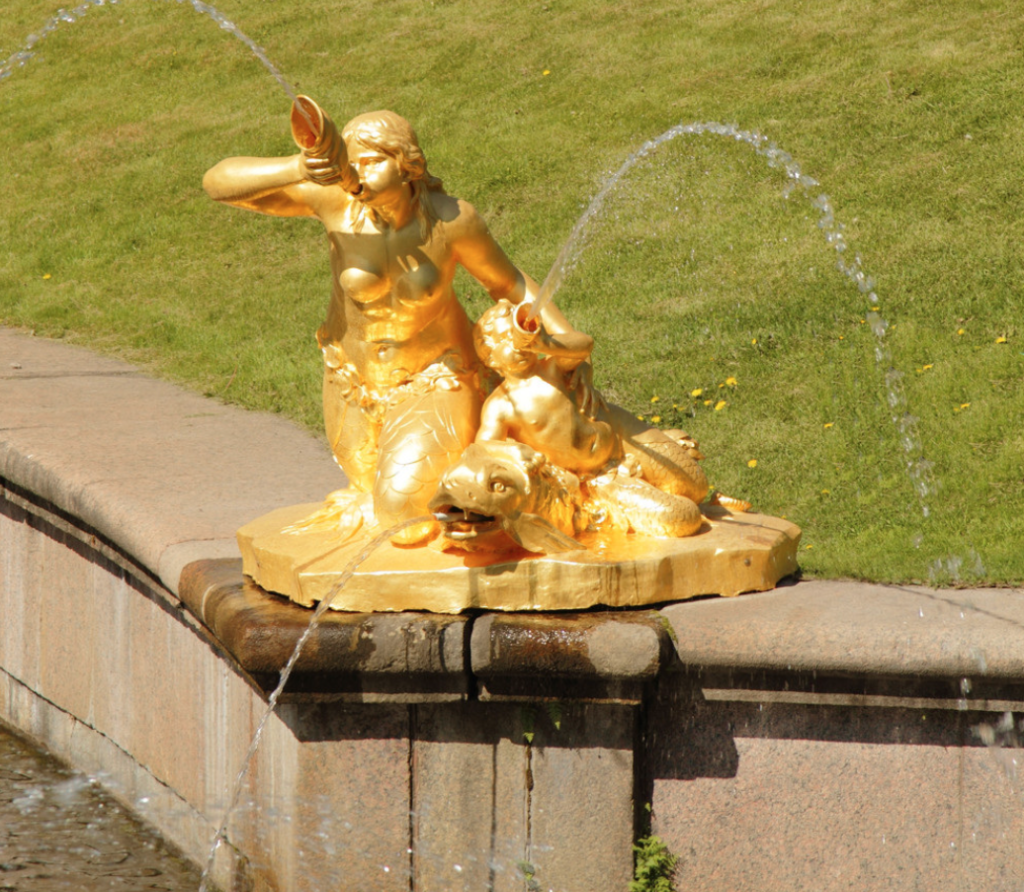
Russians have other stories of spiritual water inhabitants besides the Rusalkas. They have songs about the Tsar Morskoi, the Marine or Water King, who dwells in the depths of the sea, lake, or the pool.
Their version of the merman is called Vodyanuie, Vodyany, (or Water-Sprite).
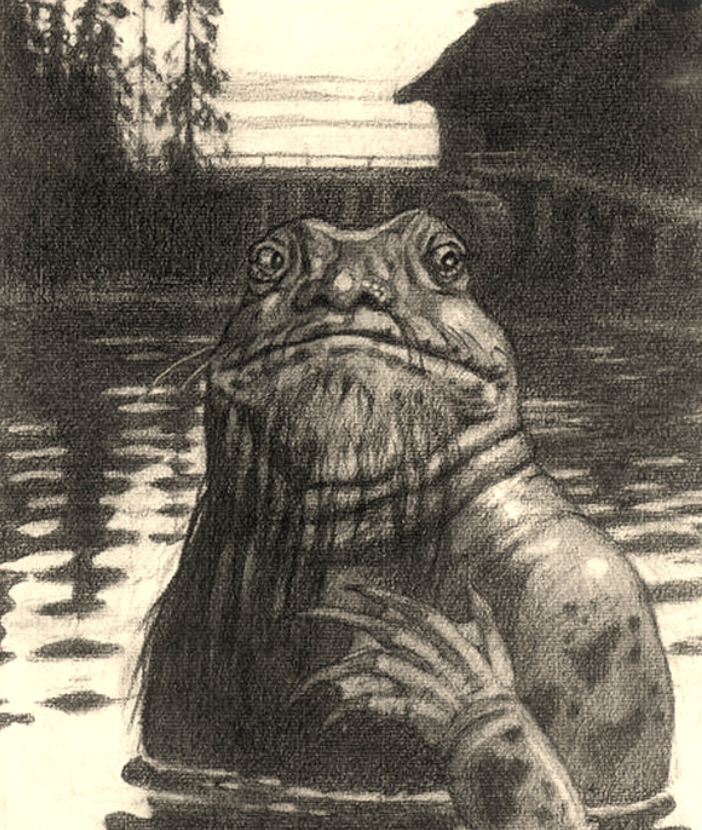
A vodyany was said to live in the region of Olonets, northern Russia, and to feed his large family, he required the corpses of animals and men. The people who lived in the vicinity avoided fetching water from the lake or bathe in it, and eventually the vodyany left for another lake by way of a river.
When a Vodyany appears in a village it is easy to recognize him. He always has water dripping on his left side and the spot he sits instantly becomes wet.
Check out poet Matthew Arnold’s “The Forsaken Merman” if you are interested in more Merman lore.
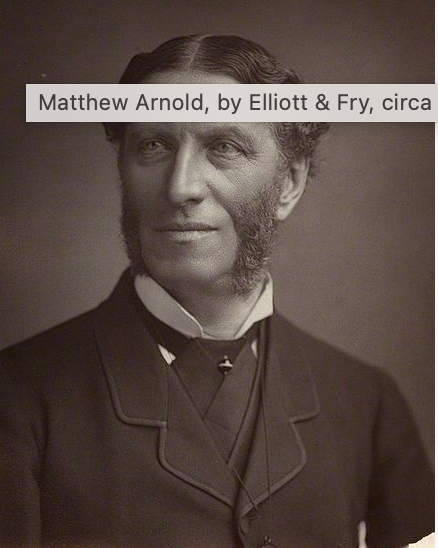
The merman of the poem grieves for his human wife, who, after hearing the church bells at Easter, has abandoned him and their children to live on land among humans, never to return. The poem is suffused with feelings of melancholy and loss.
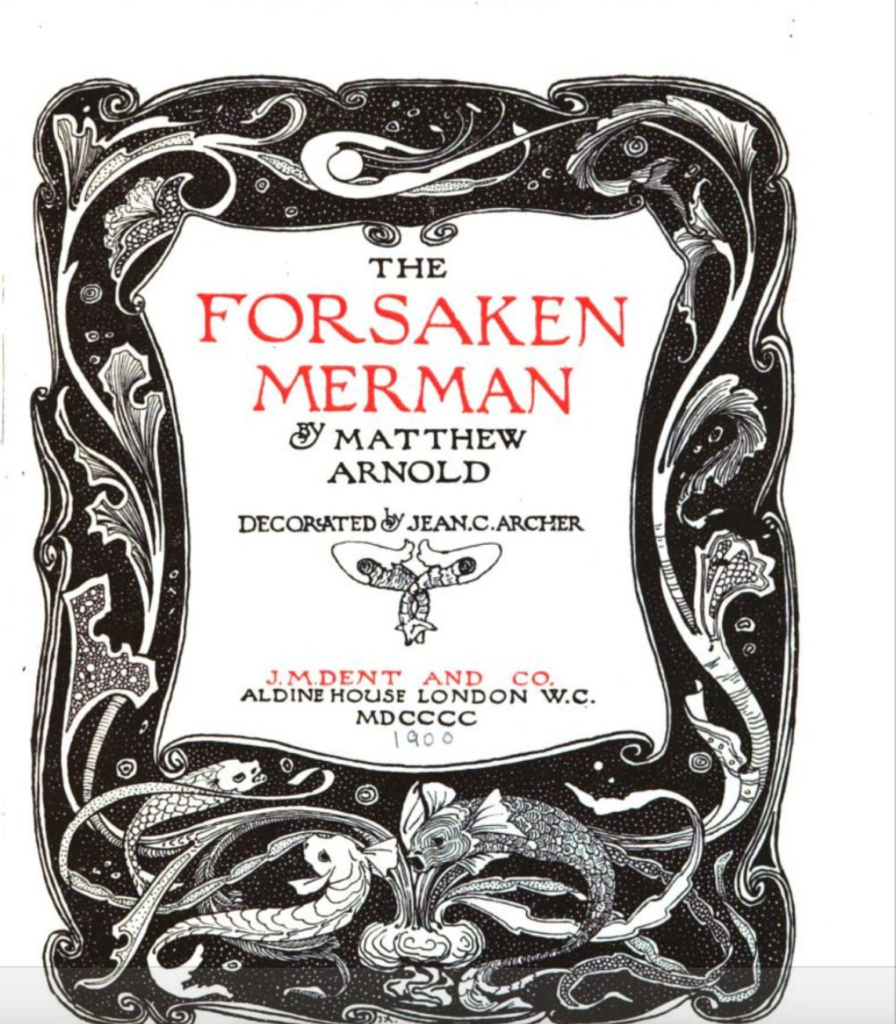
If you are choosing to travel Mermaid history and Russia is on your list, I suggest read the book above and schedule your trip around the Whitsuntide Festival and “Peter’s Fast.” Hop over to check out the gilded statues at Peterof. Although, I doubt many of us are planning a Russia trip soon. We send our love and support to those in Russia that are against what their government is doing and are protesting it loudly.
